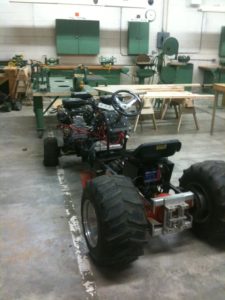After winning the TEDx Sydney Pitch Night in February 2018, I was invited to give a talk on the main stage at TEDx Sydney 2018. It was such an honor to be on stage with some really exceptional people in front of an audience of about 5000. I even got to jump on stage!
Methanogens on the International Space Station
There is currently an unexplained source of methane on Mars for which, one potential explanation is the presence of microbial life. On Earth, microbes known as methanogens produce methane as a byproduct of their growth. Many ground studies have shown that methanogens can survive the low temperatures, low pressure, and dry conditions on Mars. However, the effects of radiation and microgravity have not been studied. Outcomes of this work are also be useful for the asteroidal biomining community which aims to use methanogens to produce fuel from organic material on asteroids as an in-situ source of fuel.
I started and contributed to an experiment, MMARS, which flew on the International Space Station (ISS) in February 2017 and simulated the Martian environment to test if methanogens can grow in these conditions. A second experiment launched in June 2018 and is currently on ISS as the ISU payload Hydra2. Project participants have included the International Space University, the University of Strasbourg, and the University of New South Wales and sponsorship from Eurometropole, Space Tango, Airbus, Space Application Services, and Groupama.
Mission 5 for HI-SEAS
HI-SEAS is an 8 month simulated mission to Mars funded by NASA to study psychology. I lived in isolation with 5 crewmates on the barren slopes of Mona Loa and our only contact with the outside world is through a 40 minute delay as would found between Mars and Earth. We lived in a 130 square meter habitat doing the things Martian astronauts would do. To go outside, we wore moc space suits and had to request permission the day before. I was responsible for managing the crew and our resources including scheduling, resource utilization, and communicating with Mission Support personnel. I also certified our lab with the Hawaii Department of Agriculture for the use of recombinant microorganisms. My personal research project on the mission is the application of synthetic biology in response to mission needs.
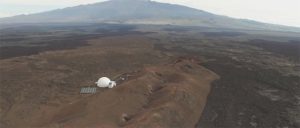
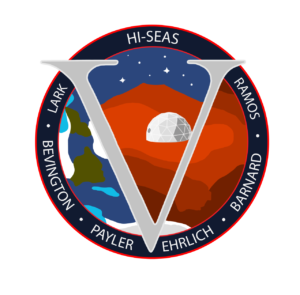
Metagenomics of Antarctic Lakes
Antarctic lakes provide excellent study sites for investigating microbial ecology. Specifically, the lakes are diverse in physical and chemical characteristics yet located in the same region. Additionally, the systems have simple community structures which enables analysis to derive a more complete picture. I developed a metagenomics analysis pipeline to process incoming samples from a recent winter-over expedition. The pipeline was designed to submit various workflows to the local HPC in an automated fashion reducing errors, user input, and increasing the longevity of data products. The entire project consists of over 3000 lines of custom script. Some portions were included in the publication below.
Development of a Method to Predict Protein Secretability with Salmonella T3SS
Currently the mechanism of secretion for the Salmonella type three secretion system (T3SS) is not understood thus selecting proteins to secrete via the T3SS is mostly just a guess. However, the labor required to verify a protein’s compatibility with the T3SS is labor intensive making incorrect guesses costly. In response, my goal was to construct an empirical, statistically derived model to predict whether or not a protein can be secreted by the engineered T3SS which was developed in part by the Tullman-Ercek lab. As an additional constraint, only variables that are computationally derived were used as input so that a prediction could be made with the amino acid sequence as the sole input. Initial models based on secretion attempts made through the Tullman-Ercek Lab’s history of research on T3SS have yielded encouraging results. Motivated by this success, the training set was expanded to 80 proteins to add stability and better coverage of the protein parameter space. I wrote over 1000 lines of Matlab code for this project. Approaches applied include Partial Least Squares coupled Discriminant Analysis (PLS-DA) and Support Vector Machines (SVM). Modeling was unsuccessful because the training set is still too small for machine learning approaches. Current efforts are focusing on dissemination of T3SS production system so that other users can expand the training set through their endeavors to apply it to various use cases.
Investigation of the Thermal Anomaly in Lake Untersee
Lake Untersee has an unexpected temperature profile in a region known as the anoxic trough. The anomaly is different from observed profiles of other lakes in that, it is smaller in size, occurs at a region known to harbor dense microbial communities supported by extremely high methane concentrations, and relatively deep in the water column. To understand the system, a thermal analysis including a finite difference approach was conducted to define the required energy sources. This was followed by investigation of chemical, biological, and physical inputs to the system to determine a plausible source or combination of sources. The results suggest that solar radiation is the source of energy responsible for heating the water and microbial metabolic reactions do not contribute significantly. However, the microbial populations act as sources of opacity to convert the solar energy into heat. I developed a finite difference mode which enabled us to evaluate potential sources of energy. This work was conducted under the guidance of Dr. Chris McKay at NASA Ames and Dr. Dale Andersen of SETI.
Saltwater Intrusion of Reclaimed Agricultural Land in the Venice Lagoon (MS Thesis)
Between 100 and 150 years ago, the Italian government reclaimed land from the edge of the Venice lagoon for agricultural purposes. The reclaiming process mostly consists of constructing a barrier of earth and pumping water out of the area to maintain a dry zone on the surface. The cost of pumping directly affects the farmers’ bottom line. Over pumping is wasteful but under pumping causes poor crop production. Therefore, they need to understand, model, and predict the optimal amount of pumping. Several research labs at the Università degli Studi di Padova are constructing this model. In particular, my responsibility was to predict unsaturated hydraulic properties for a dense grid from measurements taken at 50 locations (multivariate geospatial statistics). I also developed a method to predict these values for other fields without measuring the properties directly (spatial upscaling and pedotransfer functions). This required an investigation into the underlying causal processes which develop the soil (factorial kriging analysis). One unique aspect of this site was the paleo-river channels which add extreme variability to the soil which was challenging from a geospatial statistical point of view. The novel part of this research is the application of geospatial statistics to the study of unsaturated hydraulic properties.

International Genetically Engineered Machine (iGEM)
UGA started an iGEM team under the direction of Dr. William Whitman, Dr. Brahm Verma, and Dr. Yajun Yan. The goal was to produce geraniol in Methanococcus maripaludis. Geraniol was chosen because it is the main component of rose fragrance and has potential as a biofuel. M. maripaludis was chosen because of the challenge of working with an obligate anaerobe and to explore the use of archaea in synthetic biological applications. We successfully identified a metabolic pathway, designed the genes, constructed a shuttle vector, transformed, and verified production.
I served as a graduate advisor concerning organization, fund raising and travel. I participated in identifying the pathways and gene design. I also assisted in lab work such as PCR, cloning, screening, transformation, and product verification.

Drinking Water Sampling Near Plant Scherer
In recent years, many have reported on the health risks of living near a coal fired plant. Plant Scherer is the 7th largest power plant and the largest producer of CO2 in the US. The residents in the area have growing concerns about their air and drinking water. In collaboration with UGA and Sierra Club, two other students and I conducted several rounds of drinking water sampling for concerned residents. This required preparing a sampling plan, collecting samples using the appropriate techniques, measuring samples on an ICP-MS, and writing reports for the general public. From this, I gained not only technical skills but also experience in communicating with the media, working in a fragile situation, and managing various (some very powerful) stake holders.
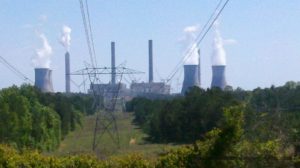
Mud Motor Proof of Concept Model
In order to prove the concept of contra rotating propellers on mud motors, I set out to build a scale model for testing. The model design has a weed eater engine, custom transmission and remote controlled boat propellers. Currently, about half of the parts have been constructed and the rest are in progress…. Eventually I will get back to this I hope.
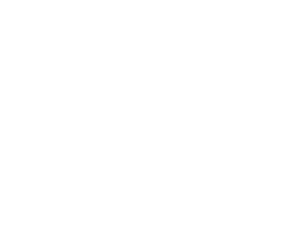

Blue Crab Restocking System for Watermen
Blue crab populations along the Atlantic and Gulf coasts are dwindling. One of the causes is overfishing. The watermen who fish for crabs have substantial investments and no other means to make money. Without crabs, they also have nothing to catch. My senior design team was tasked with designing a system for use by watermen to restock the areas which they fish. We were given a 10,000$ budget. The system required one egg-holding female crab and produced 5000 or more juvenile crabs in about 40 days. The design included a production tank, lighting system, simulated aquatic vegetation, a filter system, a plant tank to remove nitrate and a feeding regime which required live food growth. The system fit in a one bay garage, could be operated by one person working one hour per day, and cost less than 3,000$ to build.
I served as the team leader, designed the filter system and the data logging system used for testing. As leader, I was responsible for time management and finances for the group.
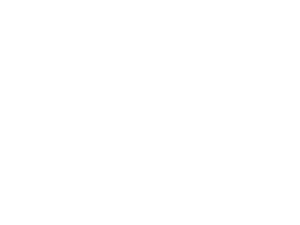

Underwater Video Mapping
Several environmental agencies such as the U.S. Forest Service used data collected and analyzed by Dr. Paul Ayers’s research group for a wide variety of projects. Some examples are mapping and documenting coal movement in the East Tennessee River system, documenting invasive species such as Hydrilla in the river system, locating endangered species habitat like the Dusky Tail Darter, and mapping the condition and quality of river banks. A typical dataset looks like a Google Street View map but on a river and some data sets are underwater. Data was collected using a kayak system equipped with several above and below water video cameras, GPS, other sensors and data logging devices.
I participated in the data collection efforts which require rapid and organized data management techniques. I also translated video into geospatial data for further analysis. I also designed two separate video mapping systems as part of this work. The first was a video mapping system which could be used on a bicycle or a hiking arrangement for mapping trails. It used some of the same components as the kayak system, but had to be much more compact and lighter. I also designed a river width measurement system using two laser range finders which was used in conjunction with video for river bank monitoring.
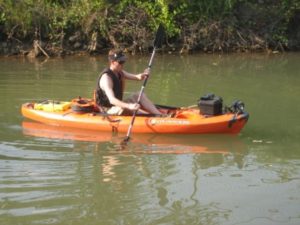
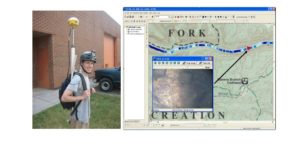
Army Vehicle Tracking
The Army is required to spend a certain portion of their budget each year on repairing the environmental damage caused by training exercises. They contracted Dr. Paul Ayers to construct a model which estimates impact based on vehicle GPS data, and to evaluate the GPS system they intend to use. Using a GPS system and this model, the Army can spend its money more effectively.
I conducted GPS quality studies and prepared vehicle tacking data (usually large GPS data sets) for use in the model. Additionally, I was involved several trips to the field to collect vegetation and tire rut data.
Quarter Scale Tractor
The quarter scale tractor pull is a student competition held by the American Society of Agricultural and Biological Engineers (ASABE) each year. Our goal was to build a tractor using mostly parts that we already had with the goal of building interest among the students for future years. Our design used three engines and a five speed transmission mounted to a custom frame. We had several parts built by our in-house machine shop to accommodate the ones we already had.
As an undergraduate sophomore, I was assigned a team of 4 freshmen to help me complete this task. I managed the team and the finances. I also designed the steering system and constructed some of the components for it.
